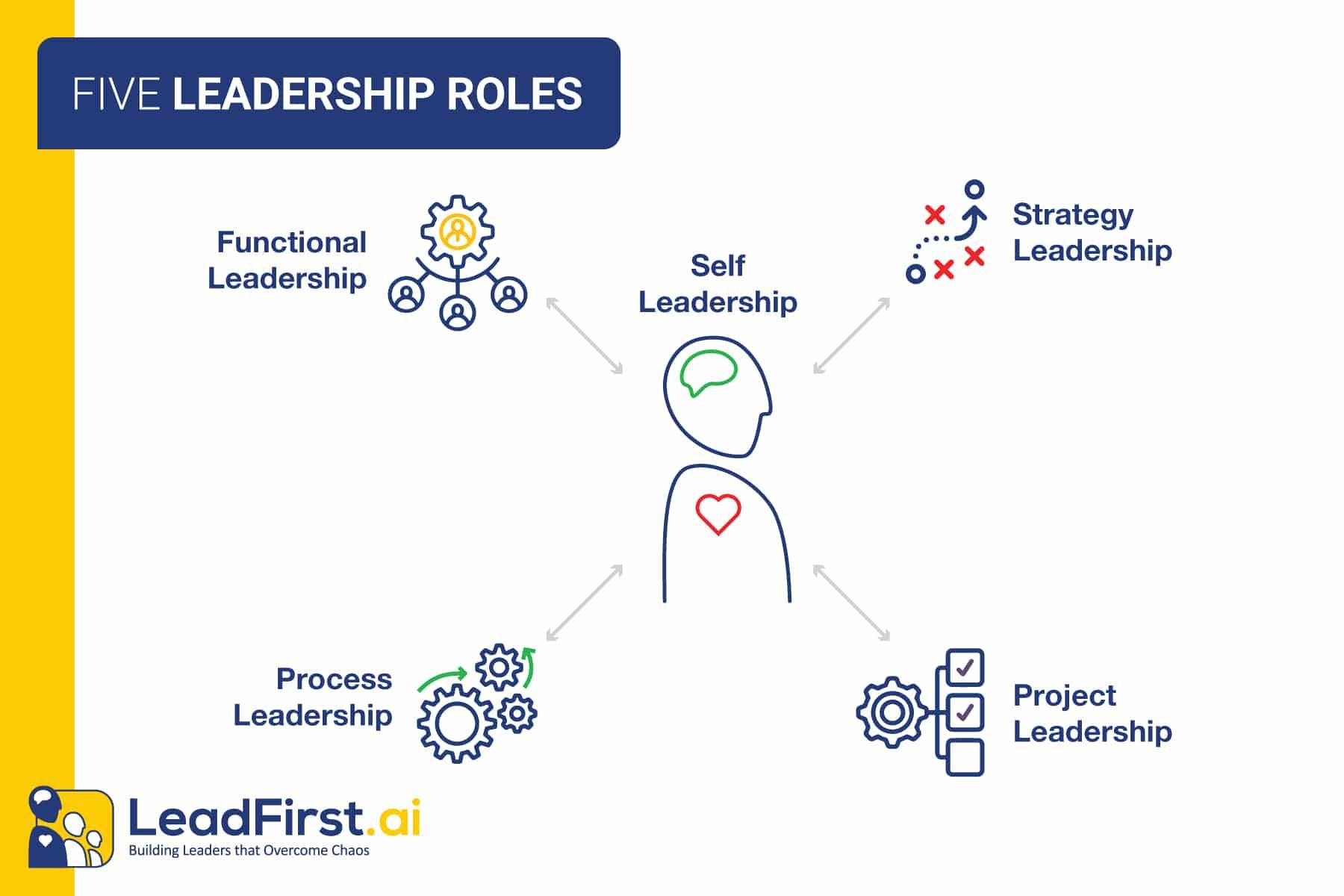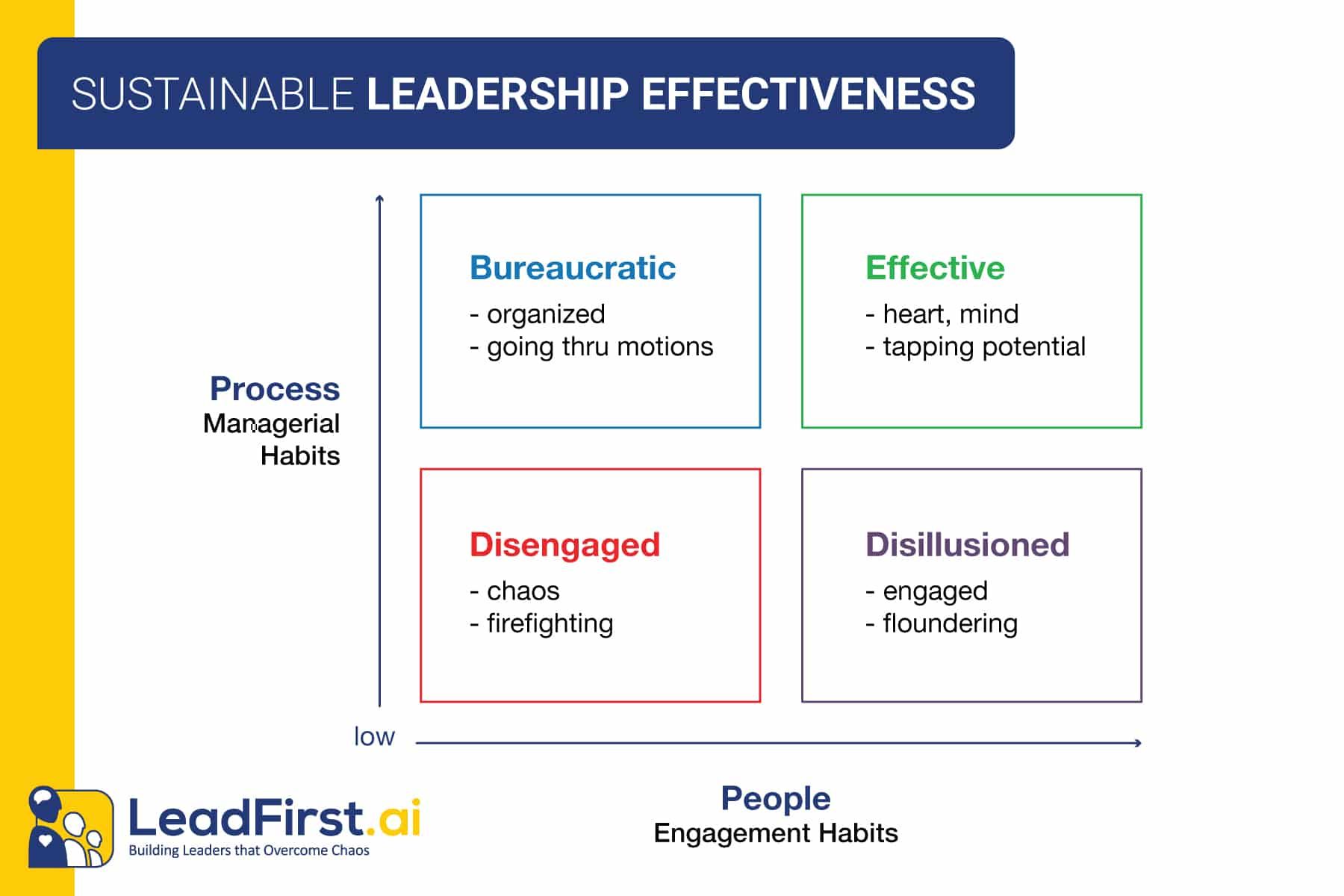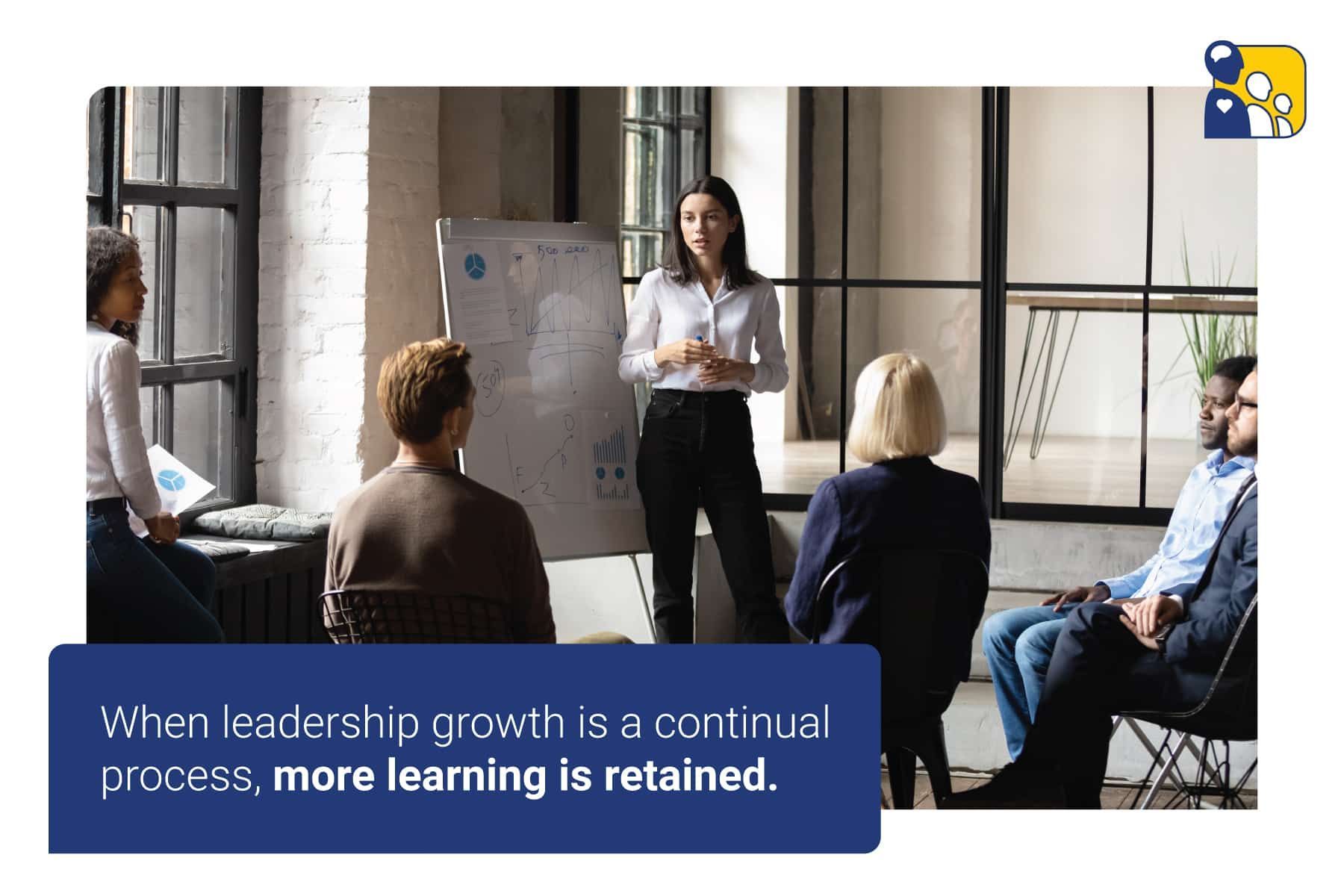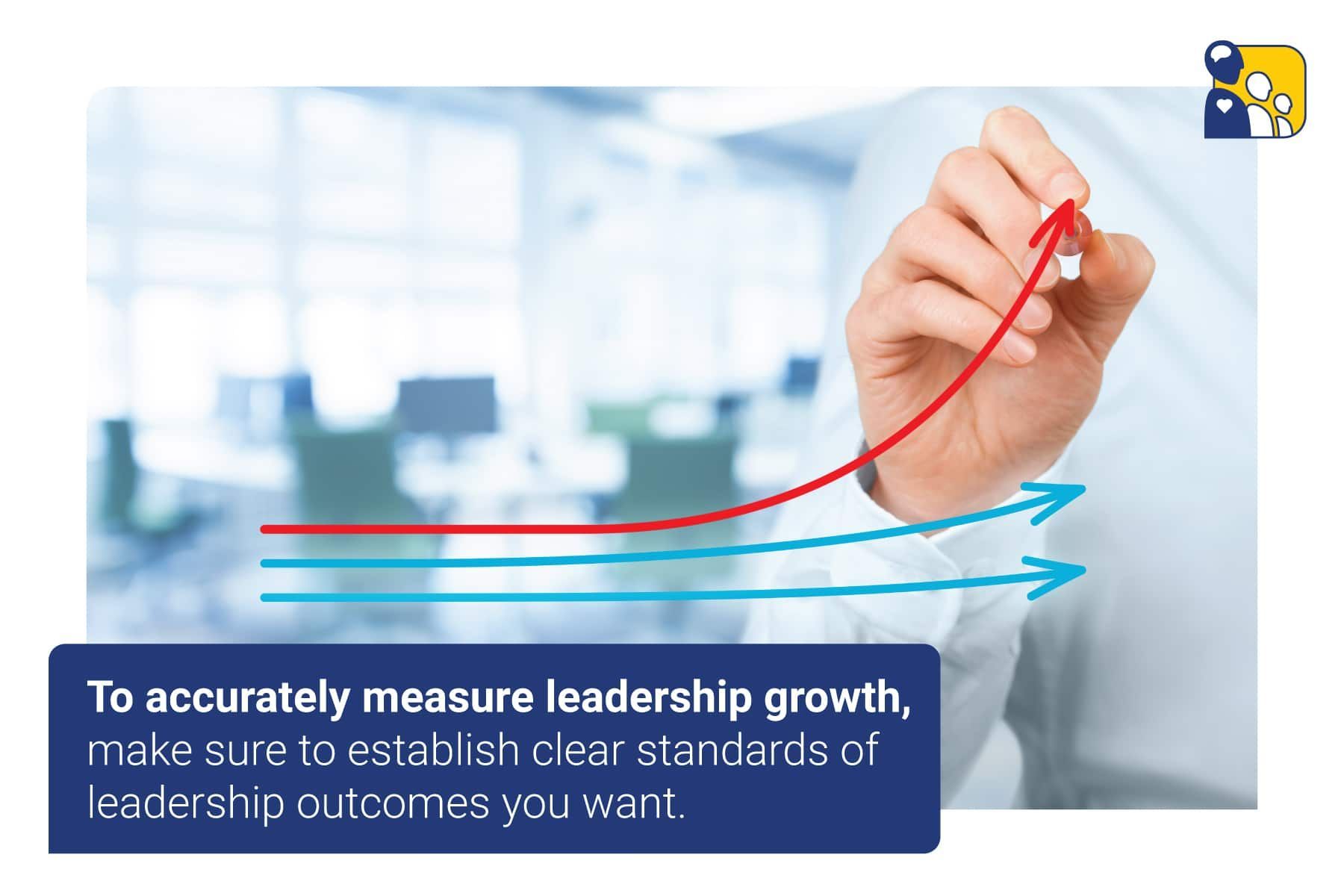Click the image to download this helpful leadership checklist from LeadFirst.
Follow this template for leadership development planning to incorporate the principles from the steps above!
The biggest challenge with leadership development is that we underestimate the skill required to lead effectively.
In fact, I believe leading ourselves and leading others is the most difficult work there is.
Let me explain with an example from physics. The world’s major accomplishments result from integration – putting pieces together into a “whole”.
Cars are an integration of computer chips, steel, plastic, rubber – thousands of components carefully engineered to fit together.
The human body consists of trillions of atoms with protons, neutrons and electrons held together by the laws of physics.
The energy holding things together is much higher proportion than the mass that is being held together. So it is with teams of people.
Whereas an engineer integrates physical items that obey the laws of physics, leaders are called to integrate people into shared purpose.
But guess what?
People don’t obey the laws of physics because they each have their own desires, dreams and skill sets. Somehow leaders have to provide and wisdom and finding the binding force that holds people together.
There are principles that guide us in how to get people to work together. Leading yourself and leading others is the most important and challenging work of all. For this reason, leaders need constant development so they can build on what they have learned in recent experience and drive their learning to the next level.
In the rest of this article, we describe a five-step framework for establishing an effective leadership development program. These steps will help you establish a sustainable model for growing leaders.

Five leadership roles exist in all organizations. A role is a type of leadership with specific requirements. It is not synonymous with a job title. Every leader has to master more than one role.
The five roles (see diagram) and related skills are described below:
Each role has differences in time horizon, functional diversity of the teams they manage, and time in the job to gain the wisdom required to fulfill the role.
All the roles start with self-leadership.
Most managers need to fulfill most of the roles. Executive leadership spends far more time on strategy and long-term thinking. But even a front-line supervisor will grow to think ahead behind the current year’s operating plans.
Beyond Self Leadership, which everyone must master, leadership development plans should consider which of these roles needs to be developed first for a leader and how to give that leader experiential learning.
Sometimes I am a slow learner. What share next took decades to sink in. I understood the following at the “head” level, but it didn’t get to the “heart level” until much later.
There are two different dimensions of leadership development.
The first is what I call “process skills” — basic skills involved with organizing work. This includes things like crafting long-term strategy, identifying customer requirements, planning, and forecasting, defining measures and targets, running effective meetings, tracking projects, performance reviews, hiring, disciplining, and resolving conflict.
It is a long list. No one masters all skills at once. It takes time.
The second dimension focuses on human interaction and engagement. It ties back to the introduction and the not-so-obvious challenges of leadership. For the task-oriented person, people skills are far more challenging to master than the business process skills.
In contrast, others are energized by people interaction and naturally build strong relationships. Most leaders aren’t equally adept at both dimensions of leadership.
The chart below illustrates effective leadership involves a balance of both skills. Those who overemphasize the processes over people to get things done can easily create a bureaucratic culture. And lose sight of why the processes exist in the first place – to make people more effective.
Those with strong people skills talk a great game but aren’t organized enough to keep everyone on the same page.
In this mode, people love their leader but become disillusioned with the ability to organize the team so they can work together effectively.
Think about the people you are mentoring, and consider which of these dimensions needs the most work.
I am a Process guy so I need to focus more on the People side. It takes more conscious effort to bring balance to that dimension.
Regardless of where you fall, the remaining steps point out that you need to measure what you are doing and continuously adjust to stay on an optimum path.


There are two strong arguments for designing your leadership development program around a continuous process.
First, a continuous process is optimized to identify what the next learning should be. This continuous focus optimizes the stacked learning of moving from basic to more advanced topics. It allows for tailoring to the individual roles and the l priorities of strategy, functional, project, process and self-leadership.
Everyone’s path is different, so a continuous process is always measuring and looking for the next best topic for any leader or group;
The second reason is learning retention. Continuous learning is optimized for learning on the job as opposed to large block classroom training.
Below are a few stats reported by Joan Burge from an Association of Talent Development (ATD) session she attended. I can’t vouch for the accuracy of this data, but I know from personal experience people learn more effectively when they apply what they are doing immediately.
Source: Your Case for Training: Adult Learning Retention Statistics (officedynamics.com)
If your leader development program is delivered continuously, your system will be optimized for individual needs just-in-time. AND content is will be applied quickly, so retention (effectiveness) of the training will be higher.
Following is a template for leadership development planning that incorporates the principles from the steps above. First it incorporates insight into the needs for each leadership role and it recognizes that the priorities for a leader vary based on their background and work situation.
Implementation Steps:
Organizations grow and change. New products, services, customers, markets, employees, and technologies. Life is an exciting and challenging chaos.
The Bible says we are designed to bring order to a chaotic world. This is what the creation narrative means when it says ‘God created us to rule over the earth’.
With all this change, it is important to measure leadership growth.
Are there needed skills that a leader never developed? Are there areas the leader has fallen behind? Has the organization changed so that new skills are required?
Answering these questions is why you need to monitor leadership and managerial skills development.
We suggest you start with the plan you built in step 4. Establish clear standards of leadership outcomes you want, and find good content that is available as microlearning that can be delivered in real-time. Finally, use a data gathering approach where the leader’s skills maturity can be measured by the primary stakeholders who interact with the leader.
The frequency of measurement depends on how dynamic you want leadership development to be.
One approach is to benchmark all the skills once a year. Then decide which skills the leader will build in the next four quarters. Incorporate those priorities into their development plan and monitor their progress like you would any other important goal.
Be aware that the measurement process builds awareness within the people that support the leader. In a mature culture, the team will think of individual development as a team effort that benefits everyone.

Whether leading yourself or others, leadership is the most important responsibility any of us have. The world needs people who know where they want to go and how to conquer chaos to get there.
Since change in the world is continuous, learning must be continuous. Delivering organizational lifelong learning becomes a strategic priority for any organization that does not want to outgrow its own ability to execute.
In Christ, the best is ahead!
-Gary
P.S. Are you looking for tools to help your leaders bring order out of chaos? I recommend you take a look at LeadFirst – a leadership management system designed to help develop and care for the leaders in your organization.


Kingdom ERM is the complete
Employee Relationship Management System that organizes employee care like CRMs organize customer care.
1219 West Main Cross
Suite 205
Findlay, Ohio 45840
LeadFirst | Site by Spearlance